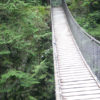The temperature was a breezy 13 degrees Fahrenheit that frosty cold December morning upon arrival at Rainbow Point at Bryce Canyon National Park in Utah as it chilled my bones — I had checked out of the Rodeway Inn Bryce Canyon hotel property after staying there for the night — but the breathtaking views were worth braving the cold.
Rainbow Point at Bryce Canyon National Park

Before arriving at Rainbow Point, I drove on the lone yet empty main road in Bryce Canyon National Park just past the entrance; and the gloomy gray clouds which lay low to the ground earlier that morning were in the process of clearing and giving way to the azure skies and bright sunshine which tried to pierce through the cold — and the result was the creation of a landscape which provided for an eerie backdrop for a grove of bare white trees.

Once at the viewpoint facing west, one can see across the Paunsagunt Plateau, the peaks of the Black Mountains, and the Tushar mountains further off in the distance. Water which falls upon the forested top of this plateau drains to the west and north along the Sevier River towards Nevada and not to the Colorado River — which therefore means that the edge of the Paunsagunt Plateau is a watershed between the Colorado River and the Great Basin desert of Nevada.
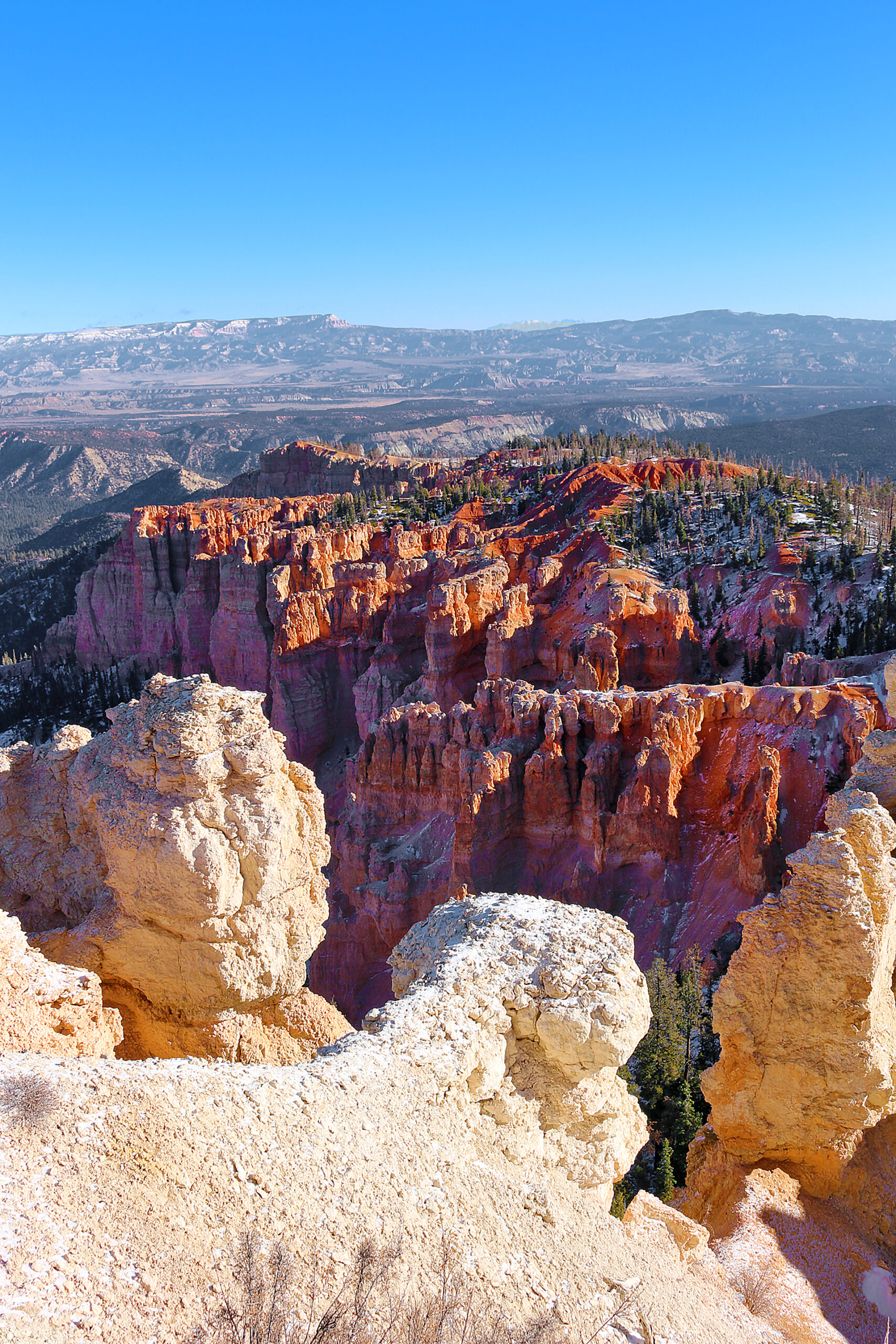
View the eroded edge of the Paunsagunt Plateau — which has been carved by rain and melting snow into bowl-shaped amphitheaters, which drain to the Paria River and then the Colorado River — when facing north from the viewpoint. Atop the Markagunt Plateau to the northwest and the Paunsaugunt Plateau in the north, the Tushar Mountains and Sevier Pplateau or Black Mountains — which were created through volcanic activity associated with the uplift of the Colorado Plateau — can be seen.

Facing east from the viewpoint below the iron-oxide colored limey mudstones of the Pink Cliffs of Bryce Canyon, the valley of the Paria River exposes marine shales of the Grey Cliffs and further south, sandstones of the White Cliffs. The Pink Cliffs as seen in the Table Cliff Plateau can be seen rising to 10,000 ft (3048 m) along the opposite side of the valley.
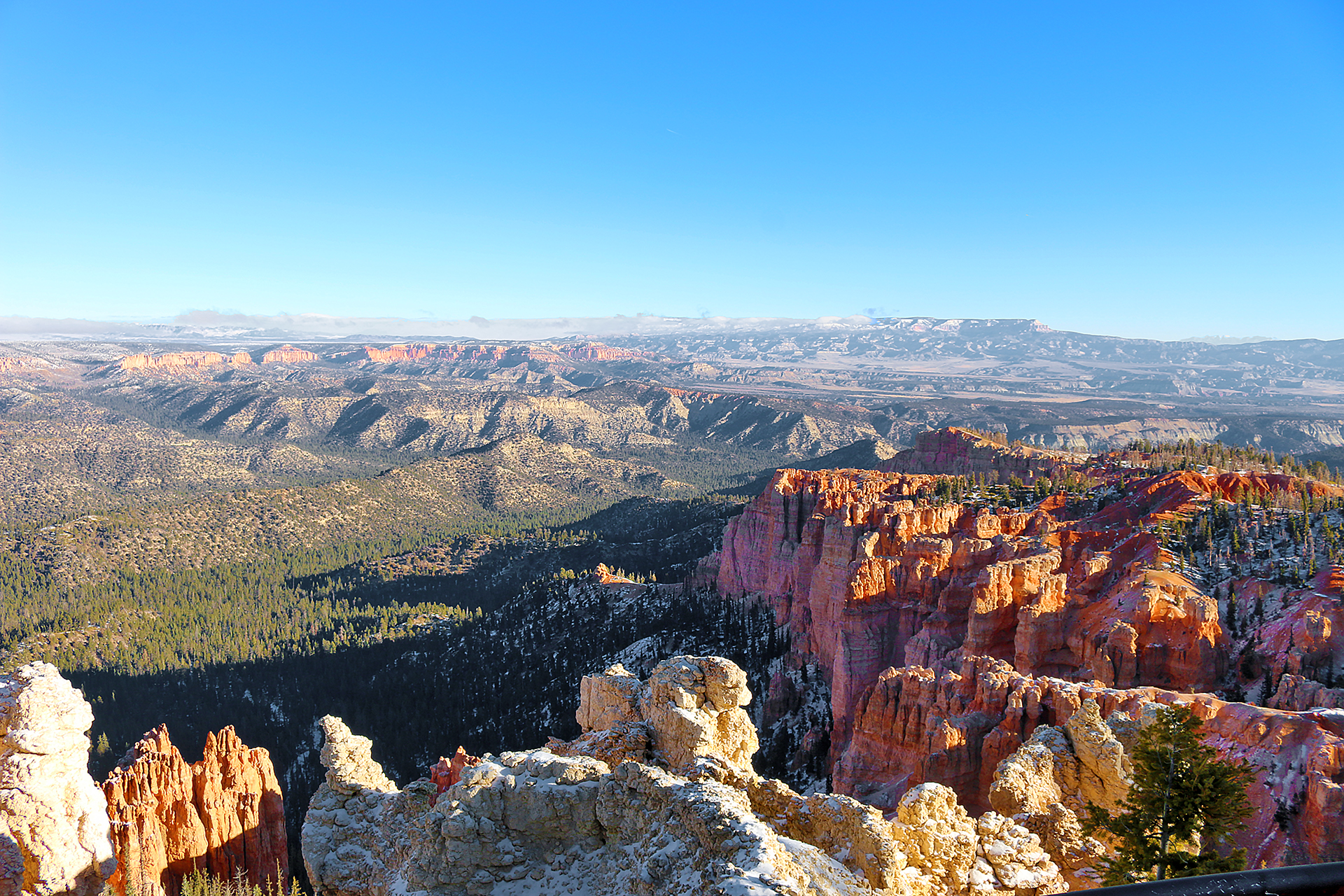
I did not realize that I followed the advice of the National Park Service of the United States, which encourages their visitors to start their automobile tour of Bryce Canyon National Park by driving directly to the very southern end first. That was a spur-of-the-moment decision because I thought that working my way out of the park was better overall than stopping at points of interest on my way in. Only two other people were at Rainbow Point because I arrived rather early in the morning — while the air was still cold and quite windy, of course.
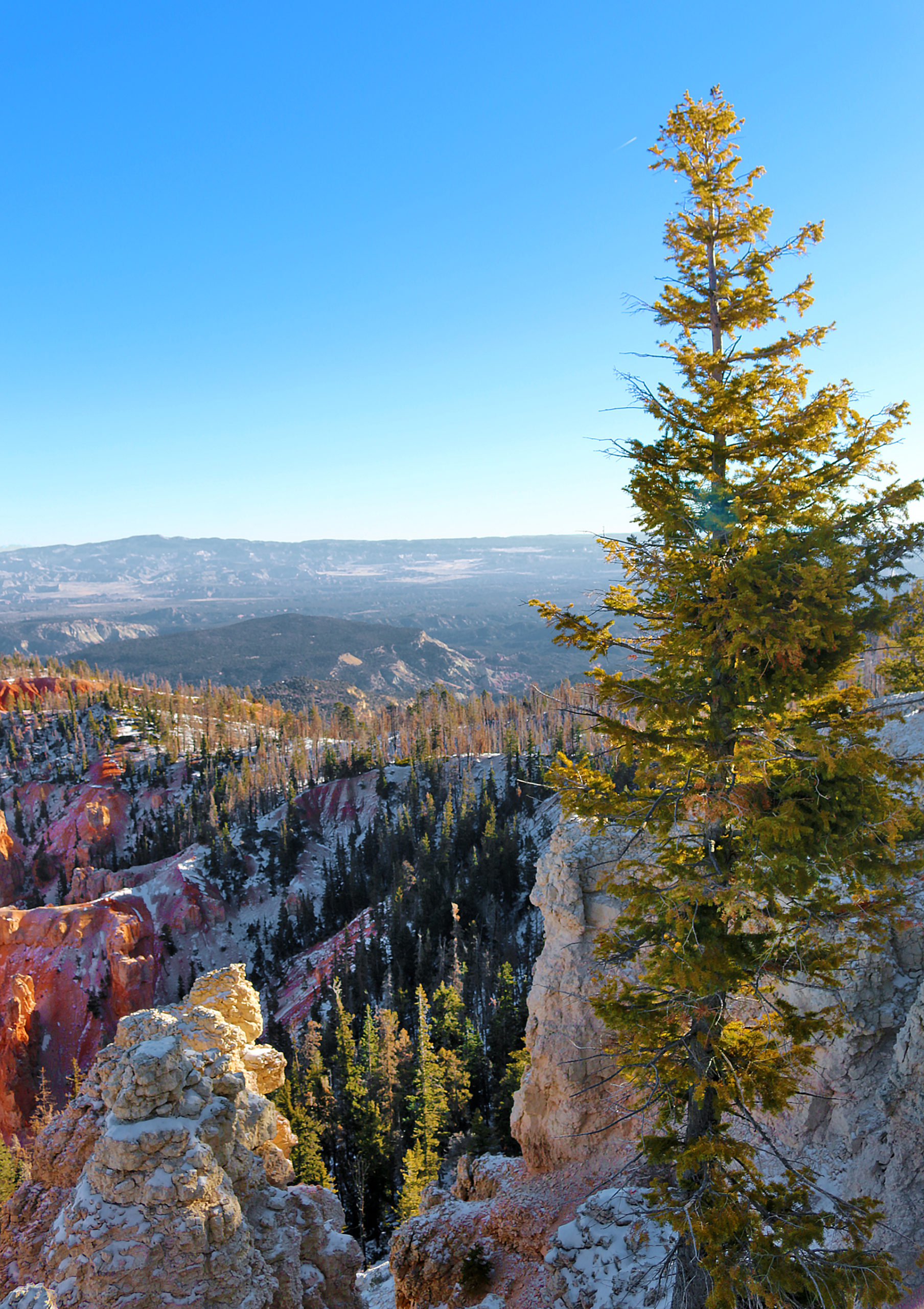
Both Rainbow Point and Yovimpa Point — which share the same parking lot — are the highest viewpoints in Bryce Canyon National Park at 9,115 feet or 2,778 meters in elevation. Despite being at the southern end of Bryce Canyon National Park, the main view from Rainbow Point faces north.
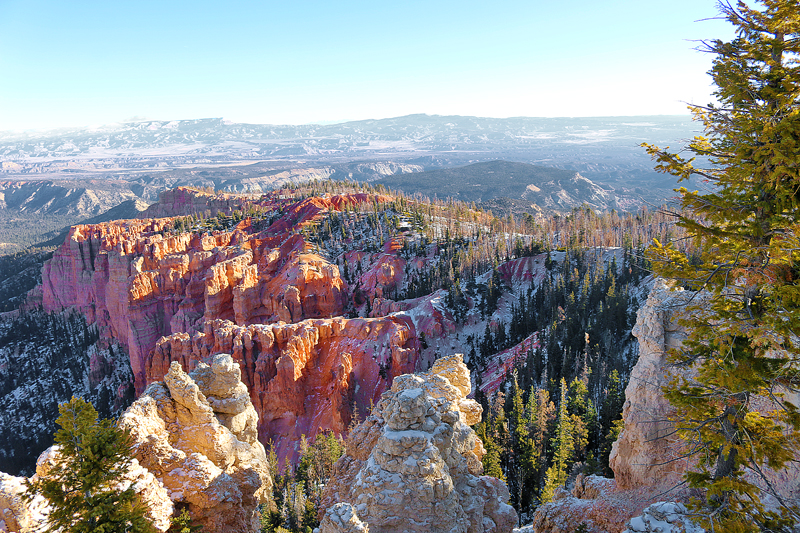
Over the course of the last 20 million years or so, tectonic uplift has lifted this entire scene from sea-level to later be dissected by tributaries of the Paria River and Colorado River.

“Tilting that occurred during uplift has situated the southern end of the park approximately 1,000 ft (304 m) higher than its northern end near the Visitor Center”, according to the official Internet web site of Bryce Canyon National Park. “Here erosion has been at work far longer than the Bryce Amphitheater, and undercut sheer cliffs compose much of the view along the edge of the Paunsaugunt Plateau.
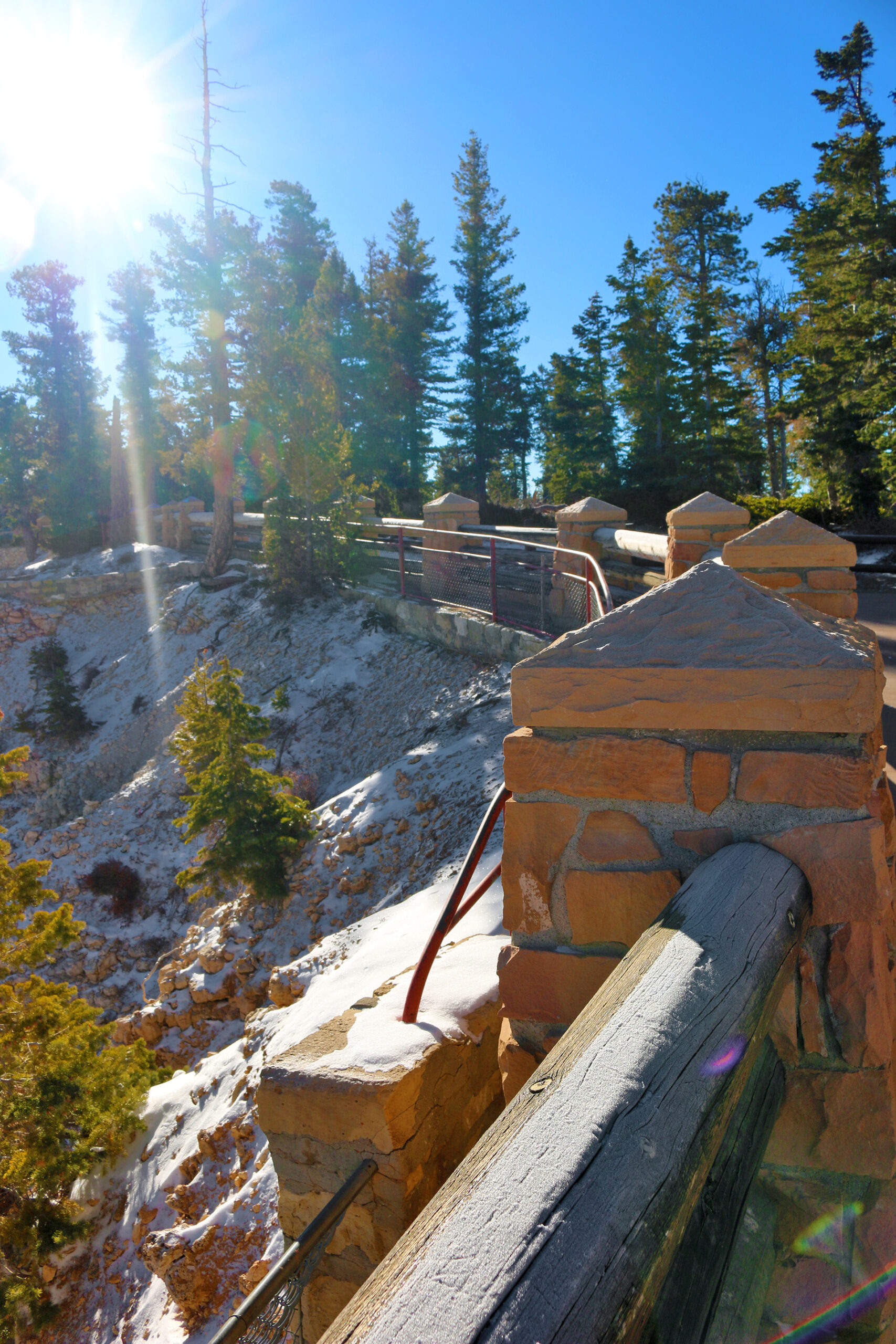
Still coated with frost as the sun rises in the east over the icy Bryce, the railing of the overlook was all that separate me from the straight drop below, which is shown in the photograph below.
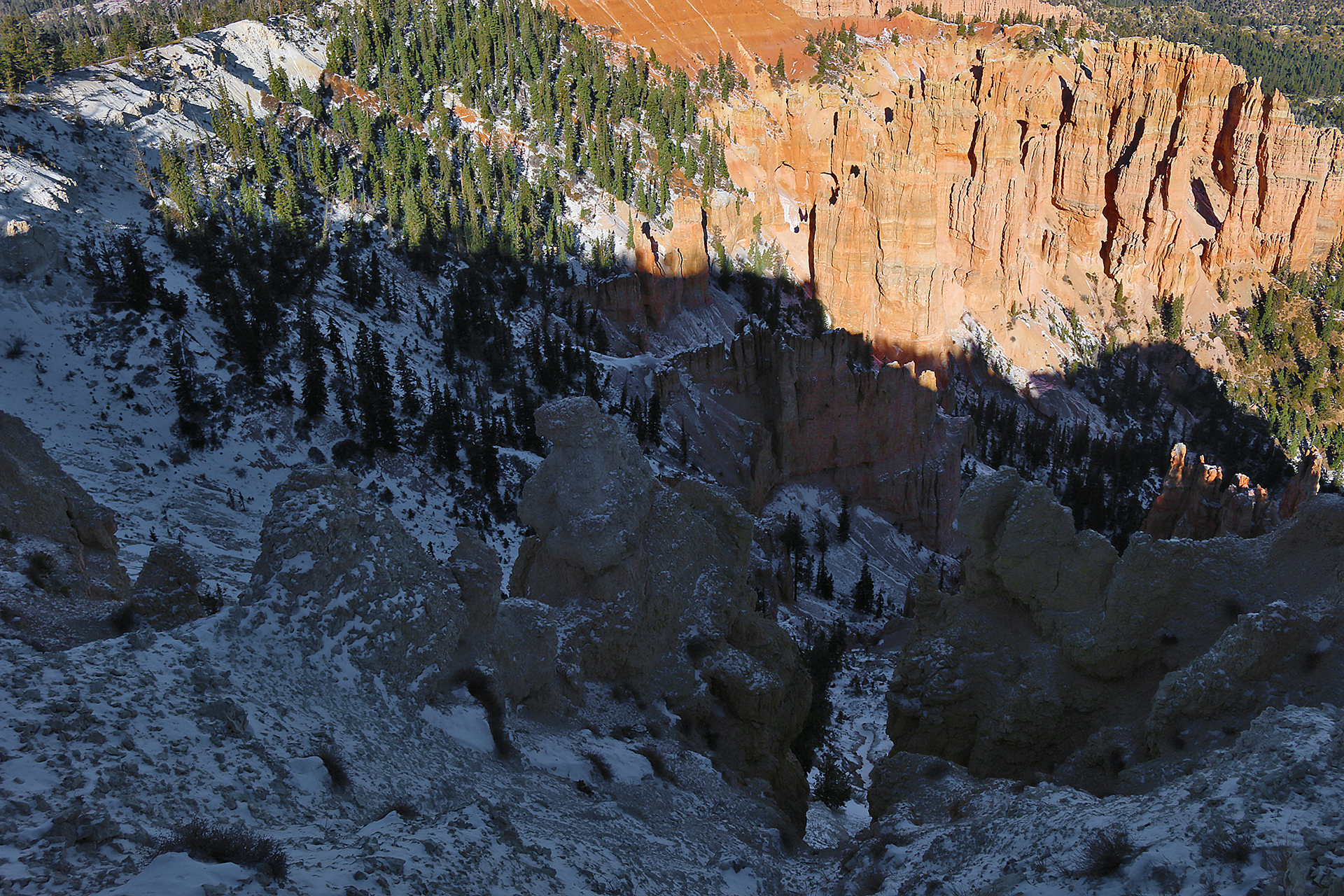
Final Boarding Call
Bryce Canyon National Park celebrates 100 years of existence in 2023; and it is open 24 hours per day, seven days per week.
Bryce Canyon National Park
P.O. Box 640201
Bryce, Utah 84764
435-834-5322
Credit cards are accepted.
All Weekly Passes are valid for seven days.
Weekly passes are non-transferable and are valid for seven consecutive days — including the date of purchase. Weekly passes may be upgraded to annual passes within seven days of purchase.
- Private Vehicle: $35.00. Admits private, non-commercial vehicle with a maximum capacity of 15 passengers and all occupants.
- Motorcycle: $30.00. Admits one non-commercial motorcycle.
- Per Person: $20.00. Admits one individual with no car. This weekly pass is typically used for bicyclists, hikers, and pedestrians. Youth 15 years of age and younger are admitted free of charge.
- Non-Commercial Organized Groups. Organized groups such as Scouts, Rotary, Clubs, Youth Groups, Churches, Reunions, etc. that do not qualify for an Academic Fee Waiver are charged as follows:
- $35.00 Admits private, non-commercial vehicle with a maximum capacity of 15 passengers.
- $20.00 per person for non-commercial vehicles with a minimum capacity of 16 passengers. Fees will not exceed the commercial fee for the same-sized vehicle. Youth 15 years of age and younger are admitted free of charge. Individuals or families with any valid Annual or Lifetime pass may use their pass for entry at the per person rate. The pass and photographic identification must be present upon entry.
Please refer to the National Parks of Utah and Colorado: Itinerary and Master Guide article — which is still a work in progress — for links to other articles at The Gate With Brian Cohen which pertain to the national parks of Utah and Colorado.
All photographs ©2020 by Brian Cohen.

